How Unanimity Can Weaken Association Boards
Many boards aren’t satisfied with a decision by majority; unanimity is their goal. Yet, the healthiest boards are unlikely to have homogenous views and unanimous decisions, instead they benefit from the diverse views and voices of their members. Board diversity brings with it many boons: richer dialogue, broader representation of different perspectives, and the capacity for stronger foresight about future opportunities and challenges.
A board’s potential is stymied by the very human desire to avoid conflict and seek agreement. Based on mutual agreement, unanimous decisions may feel stronger, but boards that seek progress only through unanimity, rather than majority agreement, inherently design a culture where voices of varying perspectives are less likely to speak up.
The paradox of unanimity
The inherent danger of unanimous decisions is the topic of a TED Talk by Derek Abbott, a physicist and electronic engineer at The University of Adelaide. In a scientific paper he co-authored, he describes the paradox of unanimity: the closer a group gets to total agreement, the less reliable the result becomes.
In situations where you’d expect variability, such as a coin toss, unanimous agreement is a troubling sign of systemic error or bias. Toss a coin 100 times and you’d expect to get heads about half the time. But if heads come up nearly 100% of the time, you'd suspect something was wrong, not with your individual flips, but with the coin itself—the system.
The dangerous territory of unanimity
The bias for unanimity can have devastating consequences outside the boardroom. For example, more avalanche accidents are caused by decision-making errors than by misreading the snowpack. Back country skiers involved in these accidents report a tendency to go along with the group, and not be the one to speak up, cause dissension, and delay action. They feel the group must know best, so they keep their concerns to themselves.
This dangerous expression of groupthink is compounded by the halo effect: people are more likely to follow the lead of a person with more expertise or social capital. Consensus is the easy way out of a potentially uncomfortable (but healthy) conflict—a behavioral pattern that can easily happen with a board too.
When the culture of a board leans towards a desire for unanimous agreement, leaders will lean into not ‘rocking the boat.’ This mindset creates conditions where the diverse views and approaches that lead to broader perspectives and considerations are no longer brought to the table—resulting in a limiting view. Board members who are encouraged to conform, rather than lobby for alternative views, can lead the organization down a less desirable path or the wrong path altogether.
Creating the right conditions for decision-making
While the onus of seeking peers’ perspectives should be part of every board member’s role, a board often follows the lead of the officers. Officers must establish the time and space to get everyone’s honest and different opinions. They must intentionally design a space for varied views so preconceived notions and opinions are seen as malleable until each perspective can be considered. Ultimately, leaders must not let biases—cognitive or systemic—get in the way.
When establishing the time and space for diverse dialogue, a corollary expectation must be made: once a board is in that space, differing voices are invited to share. The meeting or conversation facilitator should note which voices are NOT speaking up and probe to see if there is an alternative point of view in the room. When these views are shared, they should be met with respect and gratitude, since it is much harder to present an approach that doesn’t go with the flow of your colleagues.
To be clear, when a board comes to a decision, they should emerge from the board table with a singular voice—all supportive of the decision and direction of the organization. This cohesiveness, however, should not diminish the potential that comes with a board culture where varied views are welcomed and where votes that elicit a minority viewpoint are still looked at as a strength.
An organization that welcomes diverse leadership voices can weave a stronger tapestry of vision and direction through the intertwined complexity of leadership perspective. A leadership culture that can build a greater tomorrow because they lean INTO diversity, instead of conformity, will demonstrate in practice that, indeed, all voices are honored and welcomed—and the association is better because of it.
